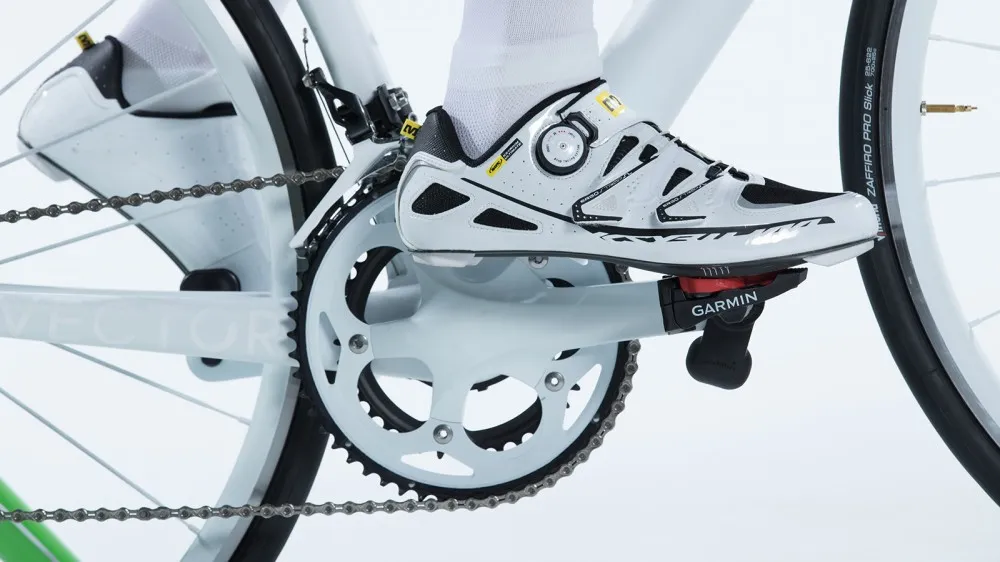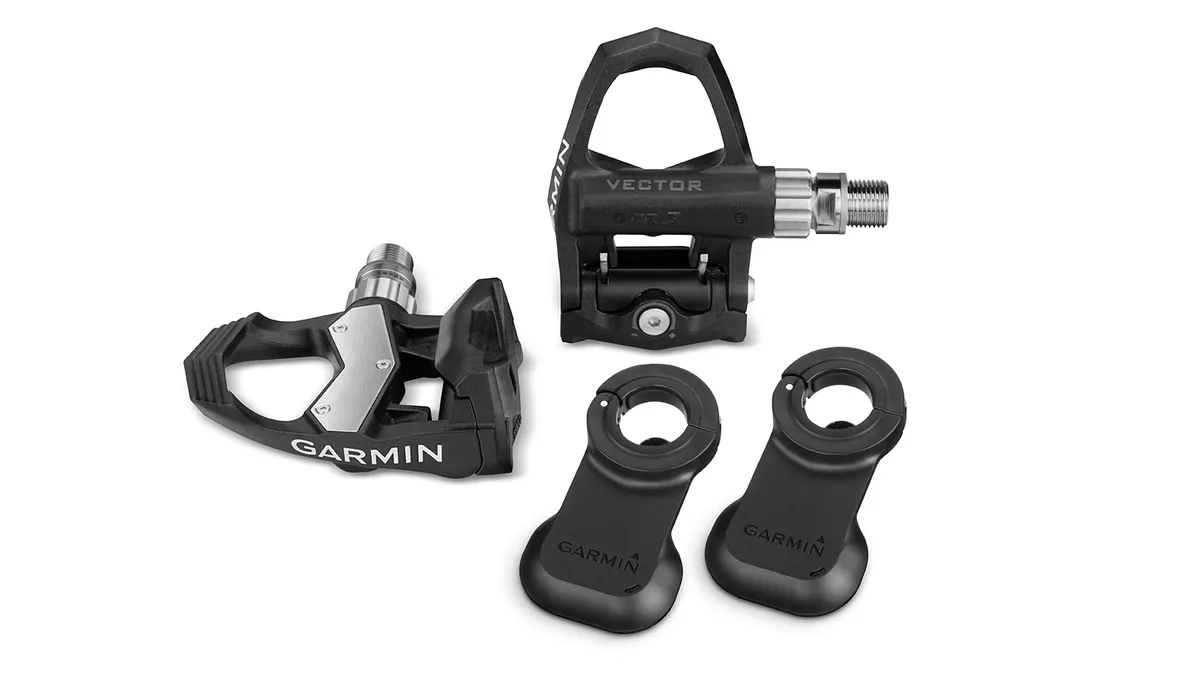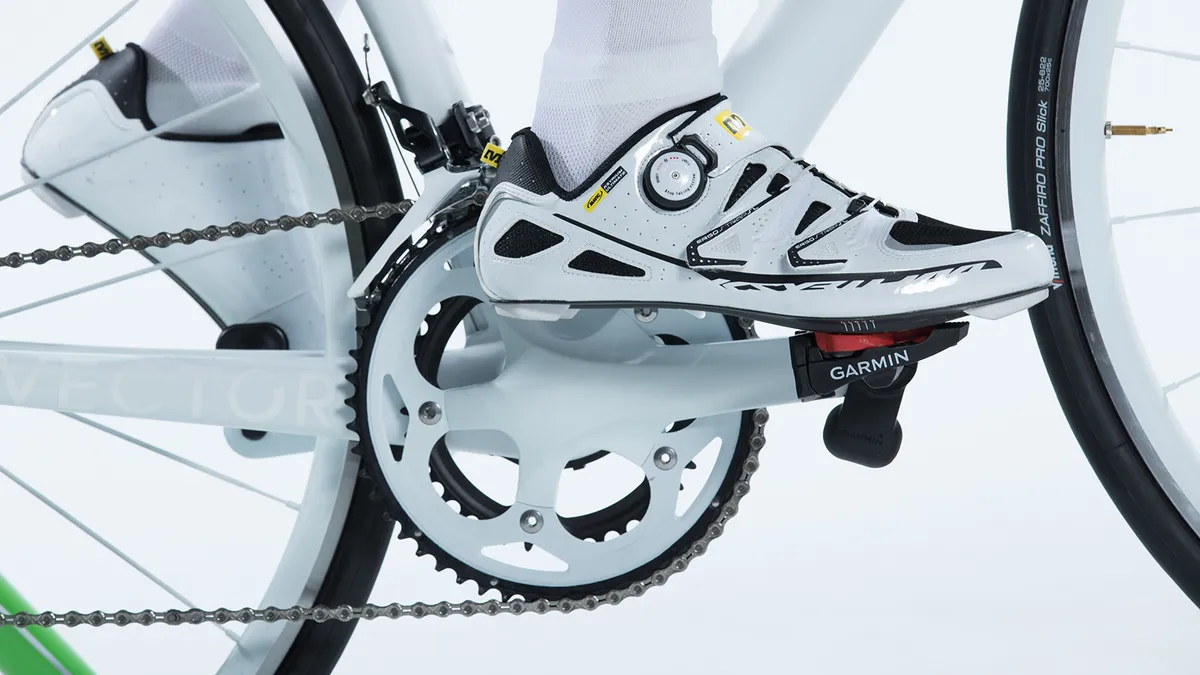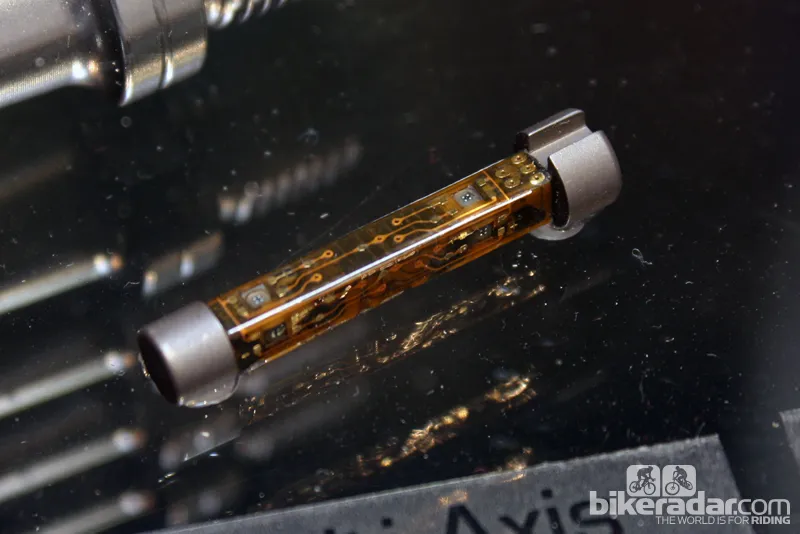On the heels of its single-sided Vector S, Garmin today announced the new Garmin Vector 2 and Vector 2S power meters, which feature redesigned pods that do away with washers and now have LED lights to display setup and maintenance information.
As with the original Garmin Vector, the Vector 2 measures power at both pedals, offering left/right balance information along with Garmin's unique 'cycling dynamics', which calculates things like where in the stroke power is generated, and how much time you spend in the saddle versus standing up. The Vector 2S includes two Look KeO-style pedals but only the left one is a power meter. It can be upgraded later with a right power meter.
For the Vector 2 and 2S, Garmin ditched the washers the original Vectors used for recessed crank faces, and changed the silver finish to black. The main change, however, is the addition of LED displays. There is one LED on the side of each pedal pod that flashes and is visible when you're off the bike and looking at the pedal from the side of the bike. The LEDs flash when you are going through the installation process, or when you stop pedaling. They go to sleep as soon as you start pedaling, or after a few minutes of inactivity. A chart in the owner's manual specifies what each series of flashes mean (e.g., 1 green flashes every 10 seconds = system is working properly; 3 green flashes = pedal pod is connected, but cannot communicate with Edge device; 1 red flash = low battery).
The Garmin Vector 2 and Vector 2S send power data to Garmin Edge computers or any ANT+ head unit. Post-ride analysis can be done with any software, but the cycling dynamics metrics require the use of Garmin Connect (Garmin's free site).
The £1,199 / US$1,499 Vector 2 and £749 / US$899 Vector 2S will be available later this year in two models: Standard (cranks 12-15 mm thick, up to 44 mm wide) and Large (cranks 15-18 mm thick, up to 44 mm wide). The optional Vector 2S right-side upgrade pedal will be available for £549 / US$699, the Vector to Vector 2 pod upgrade kit will be available for £120 / US$149, and the Vector S to Vector 2S pod upgrade kit will be £80 / US$99.

What is next? Vector for SPD, SPD-SL or Speedplay?
While the new Vector 2 and 2S address some issues with the pods, we have to speculate on what could be next for the company. Could we see Vectors for Shimano SPD and SPD-SL pedals?
The Vector places its eight piezoresistive strain gauges on a tiny stainless steel 'dogbone' that's then inserted into a cylindrical bore inside a pedal spindle. Other electronics, such as the batteries and wireless hardware, are housed in a separate pedal pod, the shape and size of which can easily be reworked as needed. As such, this modular design lends itself to being adapted for other cleat interfaces and pedal designs.
The original Vector – then under the MetriGear label – was designed to use a Speedplay spindle, the dimensions of which would have made it easy to insert into Speedplay's Zero road pedals or SYZR mountain bike pedals, as they share very similar axle designs.
Garmin has since switched to Exustar as a pedal partner for the production Vector. The meter is currently only available in road pedal form but we still expect a mountain bike version to appear on the market some time soon. While in theory you could swap the entire axle cartridge assembly with that of another Exustar pedal that uses the same bearing system, Exustar's mountain bike pedals use a different layout to their road models.
Garmin Vector product manager Clark Foy wouldn't be drawn on a projected release date for a mountain bike version of the system, but he did confirm that it would probably be the next application.
"What we're mostly likely to do is go mountain for the next pedal," he said. "It's fairly trivial from a technology standpoint, now that the sensor design is so well understood. We can migrate that to a mountain bike spindle with very little development effort. Exustar has a full line of really solid SPD mountain bike pedals, too."
Vector-curious consumers shouldn't rule out Speedplay entirely, nor Shimano, nor any other pedal interface for that matter. While Exustar is the official manufacturing partner at the moment, Foy says Garmin has already been approached by other companies looking to add power to their lineup. "Virtually every pedal manufacturer has come to us and said, 'Hey, we'd love to put this in our pedal.' We've had discussions with virtually everybody out there."
Foy says such expansion isn't likely, though, given the extreme tolerances required in machining the spindle, and business-related issues such as supply chain management, shared margins, and so on. "If there's a part of the market that absolutely demands it, we'd consider it."


